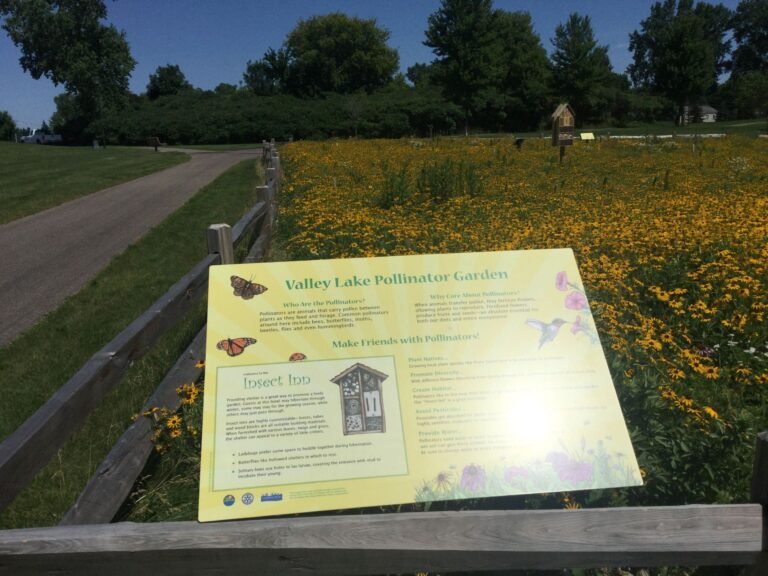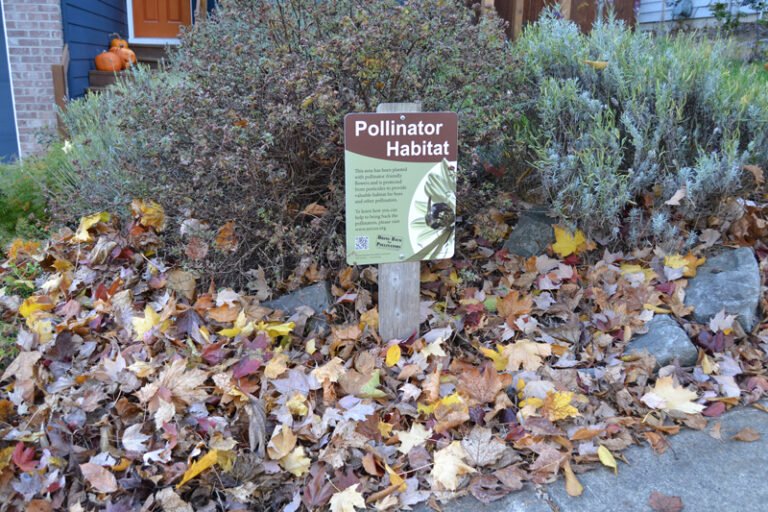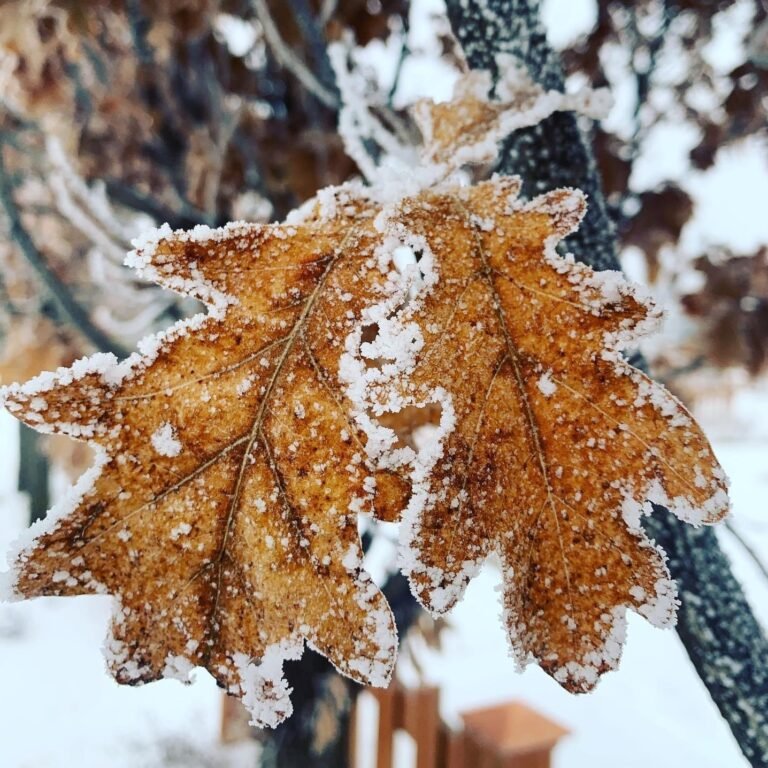Winter can be harsh on gardens and pollinators. Protecting them is crucial.
As temperatures drop, your garden and its tiny helpers face many challenges. Frost, snow, and cold winds can damage plants and make life hard for bees and butterflies. But with some simple steps, you can create a safe haven for your garden and pollinators.
This guide will share ten practical tips to help you prepare and protect them during the cold months. By taking action now, you’ll ensure a vibrant, healthy garden and support the pollinators that play a vital role in our ecosystem. Let’s dive into these tips and make your winter garden a sanctuary for all.
Preparing Your Garden
Protect your garden and pollinators this winter with these 10 essential tips. Ensure your plants stay healthy and safe. Help bees and butterflies thrive through the cold months.
Winter can be tough on gardens and pollinators. Proper preparation is key. By taking a few steps, you can protect your garden and support pollinators. Below are some important tips to help you get started.Clearing Debris
Remove any dead plants and fallen leaves. This reduces hiding spots for pests. It also prevents diseases from spreading. Be careful not to disturb any overwintering insects. They often hide in plant stems and leaf litter. A clean garden is healthier and more attractive.Adding Mulch
Apply a layer of mulch around your plants. Mulch helps retain moisture and regulate soil temperature. It also provides shelter for beneficial insects. Use organic mulch like straw, leaves, or compost. Avoid using synthetic materials. They do not break down and add nutrients to the soil. Mulching is a simple step with big benefits. “`Choosing Winter-friendly Plants
Winter can be tough on gardens and pollinators. Choosing the right winter-friendly plants is essential for keeping your garden thriving and ensuring pollinators have a safe haven. Here are some tips for selecting the best plants for winter.
Perennials Selection
Perennials are plants that live for more than two years. They are a great choice for winter-friendly gardens because they come back year after year. Some excellent winter perennials include:
- Hellebores: Known as the Christmas rose, they bloom in late winter.
- Snowdrops: These small white flowers appear as early as January.
- Winter aconite: Bright yellow flowers that bloom in late winter.
These plants not only add color to your winter garden but also provide nectar for pollinators.
Hardy Annuals
Hardy annuals complete their life cycle in one year but can withstand cold temperatures. Some popular hardy annuals include:
- Pansies: These flowers can bloom even in freezing temperatures.
- Violas: Smaller than pansies but equally resilient.
- Calendula: Known as pot marigold, it blooms in late fall and early winter.
These hardy annuals can help keep your garden vibrant and support pollinators during colder months.
By selecting the right perennials and hardy annuals, you can create a winter-friendly garden that supports both plant and pollinator life.
Watering Strategies
Winter can be tough on gardens and pollinators. Proper watering strategies can help protect your plants and the beneficial insects that support them. This section will discuss two key aspects: winter irrigation and preventing frost damage.
Winter Irrigation
Watering your garden in winter is different from other seasons. Soil needs moisture even in cold weather. Dry soil can freeze faster and deeper. This can damage plant roots. Water your garden during warm days. Aim for mid-morning. This gives the soil time to absorb water before freezing temperatures return at night. Use a soaker hose or drip irrigation. These methods provide slow, deep watering. Avoid overhead watering. It can cause water to freeze on plants, leading to damage.
Preventing Frost Damage
Frost can be harmful to plants and pollinators. Proper watering can reduce this risk. Well-hydrated plants are more frost-resistant. Watering can create a microclimate around the plants. This microclimate can be a few degrees warmer. It’s often enough to prevent frost damage. Mulch your garden beds. Mulch helps retain soil moisture and insulates roots. It also creates a barrier against freezing temperatures. Cover sensitive plants with frost cloths or blankets. These covers trap heat and protect plants from frost. Remove covers during the day to prevent overheating.
Protecting Pollinators
Winter can be tough on our garden friends, especially the pollinators. Bees, butterflies, and other pollinators play a crucial role in our gardens. They help plants grow by transferring pollen. Protecting them during the cold months is vital. This ensures they return in spring to continue their important work.
Building Shelters
Pollinators need safe places to hide from the cold. You can create shelters easily. Use materials like wood, leaves, and twigs. Bee hotels are a great option. These provide a warm place for solitary bees. Place them in a sunny spot, away from the wind. Avoid placing them near ground level. This keeps them safe from predators.
Butterflies also need shelter. Create brush piles in your garden. These piles offer protection from the wind and cold. Use branches, logs, and leaves. This mimics their natural habitat. It keeps them safe until the weather warms up.
Providing Food Sources
Pollinators need food, even in winter. Some plants bloom in cold weather. These provide nectar and pollen. Plant winter flowers like hellebores and snowdrops. They are hardy and can survive the frost. This keeps your garden lively and colorful too.
You can also leave some vegetables unharvested. Kale and broccoli flowers attract bees. They offer a food source when other flowers are scarce. Another option is to provide sugar water. This helps bees on warmer winter days. Use a shallow dish with a few pebbles. This prevents drowning.
Using Covers And Cloches
Winter can be harsh on your garden and its pollinators. Using covers and cloches is a great way to protect them. These simple tools help create a warmer environment. They shield your plants from frost and cold winds. Let’s explore two effective options: frost cloths and cold frames.
Frost Cloths
Frost cloths are lightweight fabrics. They cover plants directly. This creates a barrier against frost and cold winds. You can easily drape them over plants. Secure them with rocks or pins. They allow air and moisture to reach the plants. This helps in maintaining a healthy environment. Frost cloths are reusable. So, store them properly after use.
Cold Frames
Cold frames are simple structures. They protect plants from cold weather. These frames are like mini-greenhouses. They usually have a transparent lid. This lid traps sunlight and warmth inside. You can use old windows or plastic sheets as lids. Cold frames are great for starting seedlings early. They also extend the growing season. Position them facing south. This maximizes sunlight exposure. Regularly vent them to prevent overheating.
Managing Soil Health
Managing soil health is crucial for protecting your garden and its pollinators in winter. Healthy soil acts as a buffer against cold temperatures and provides essential nutrients. It helps plants thrive and supports the ecosystem.
Soil Testing
First, conduct a soil test. This step reveals the soil’s pH and nutrient levels. Testing helps identify deficiencies and imbalances. You can buy a soil test kit online or at a garden center. Follow the instructions carefully for accurate results. Knowing your soil’s condition allows you to address specific needs.
Amending Soil
Once you have your soil test results, you can amend the soil. Add organic matter like compost or aged manure. These materials enrich the soil with vital nutrients. They also improve soil structure and water retention. If the pH level is off, use lime to raise it or sulfur to lower it. Adjusting soil pH ensures plants can absorb nutrients effectively.
Mulching is another effective method. A layer of mulch protects the soil from erosion and temperature extremes. It also provides habitat for beneficial insects and microorganisms. Choose mulch materials like straw, leaves, or wood chips. Spread a thick layer over your garden beds for maximum benefit.
Pruning Techniques
Pruning is essential for maintaining a healthy garden, especially in winter. Knowing the right techniques helps plants thrive and ensures pollinators find a safe haven. Let’s explore some effective winter pruning techniques to keep your garden vibrant.
Winter Pruning
Winter is the best time to prune many plants. Trees and shrubs are dormant, making it easier to see their structure. This helps in removing dead or diseased branches without harming the plant. Always cut at a slight angle, just above a bud or branch.
Prune roses and deciduous trees in late winter. This encourages growth in spring. For evergreens, prune only to shape them. Avoid cutting too much. It stresses the plant.
Tool Maintenance
Proper tool maintenance is crucial for effective pruning. Clean your pruning tools after each use. This prevents the spread of diseases. Use a solution of water and bleach for cleaning. Dry them thoroughly to avoid rust.
Sharpen your tools regularly. Sharp tools make clean cuts, reducing plant stress. Invest in quality pruning shears and saws. They last longer and make the job easier. Store your tools in a dry place to keep them in good condition.
Monitoring Weather Conditions
Monitoring weather conditions is crucial for garden and pollinator protection during winter. By staying informed, you can take timely actions to safeguard your garden. This section will discuss two effective methods: using weather apps and setting alerts.
Using Weather Apps
Weather apps provide real-time updates and forecasts. They help you stay aware of any changes. Download a reliable weather app on your smartphone or tablet. Some popular options are AccuWeather, Weather Channel, and Weather Underground.
- AccuWeather: Offers minute-by-minute forecasts and radar maps.
- Weather Channel: Provides detailed forecasts and weather alerts.
- Weather Underground: Known for hyper-local forecasts and weather data.
These apps allow you to check the weather anytime. You can plan garden protection activities accordingly. They also offer features like radar maps and weather news.
Setting Alerts
Setting alerts ensures you receive timely notifications. This is essential for taking quick action to protect your garden. Most weather apps allow you to set custom alerts.
Follow these steps to set alerts:
- Open your weather app.
- Navigate to the settings menu.
- Find the alert settings option.
- Set alerts for temperatures, frost, and severe weather.
These alerts help you stay prepared. For example, a frost alert can remind you to cover sensitive plants. This proactive approach can make a big difference.
Encouraging Biodiversity
Encouraging biodiversity in your garden during winter is crucial. It helps protect pollinators and other beneficial insects. By creating a diverse ecosystem, you ensure that your garden remains vibrant and healthy. Below are some practical tips to encourage biodiversity.
Planting Natives
Planting native plants is essential for garden health. Native plants are adapted to local conditions. They provide food and shelter for local wildlife. These plants often require less water and care. This makes them a sustainable choice. Some great options include:
- Milkweed – Attracts monarch butterflies.
- Goldenrod – Supports various pollinators.
- Asters – Provide late-season nectar.
Plant a variety of native species. This will ensure a continuous supply of resources for pollinators. It also enhances the beauty of your garden year-round.
Creating Habitats
Creating habitats helps support garden biodiversity. Simple structures can provide shelter and nesting sites. Consider adding the following elements:
- Brush Piles – Offer shelter for insects and small animals.
- Bee Hotels – Provide nesting sites for solitary bees.
- Rock Gardens – Create microhabitats for various creatures.
Incorporate water sources like small ponds or birdbaths. These attract birds and insects. Mulch your garden beds to protect the soil and provide habitat for ground-dwelling insects.
By focusing on these elements, you encourage a thriving, diverse ecosystem in your garden. This supports pollinators and other beneficial wildlife during the winter months.
Planning For Spring
Winter may be in full swing, but it is never too early to plan for spring. Preparing your garden now can ensure that your plants and pollinators thrive when the weather warms up. Consider these strategies as you look ahead to the upcoming season.
Early Planting
Early planting gives your garden a head start. Choose hardy plants that can withstand cooler temperatures. These plants will establish roots before spring fully arrives. This will lead to stronger growth.
Consider using protective coverings. Row covers or cloches can shield young plants from frost. This helps maintain a warmer micro-environment.
Seed Selection
Select seeds that are well-suited to your climate. Native plants often fare better in local conditions. They provide natural habitats for pollinators.
Opt for a variety of plants. Diverse plantings can attract different types of pollinators. This ensures a healthy ecosystem in your garden.
Read seed packets carefully. Look for information on planting times and care requirements. This will help you make the best choices for your garden.
Frequently Asked Questions
How Can I Protect My Garden In Winter?
To protect your garden, use mulch to insulate soil, cover plants with fabric, and water them regularly. Avoid heavy pruning.
What Are Winter Garden Tips For Pollinators?
Leave some plants untrimmed for shelter, provide water sources, and plant late-blooming flowers. Avoid using pesticides.
Should I Use Mulch In Winter?
Yes, mulch helps insulate the soil and maintain moisture. It protects plant roots from freezing temperatures.
How Do I Cover Plants In Winter?
Use frost cloths, burlap, or old sheets to cover plants. Ensure the cover reaches the ground to trap heat.
Conclusion
Protecting your garden and pollinators in winter is essential. Simple steps can make a big difference. Mulch your plants to keep roots warm. Provide shelter for insects and birds. Avoid using harsh chemicals. Encourage native plants for their resilience. Water plants sparingly but adequately.
Cover delicate plants with frost cloth. Keep bird feeders clean and full. These tips ensure a thriving garden come spring. A little effort now brings big rewards later. Stay proactive, and your garden will thank you.



